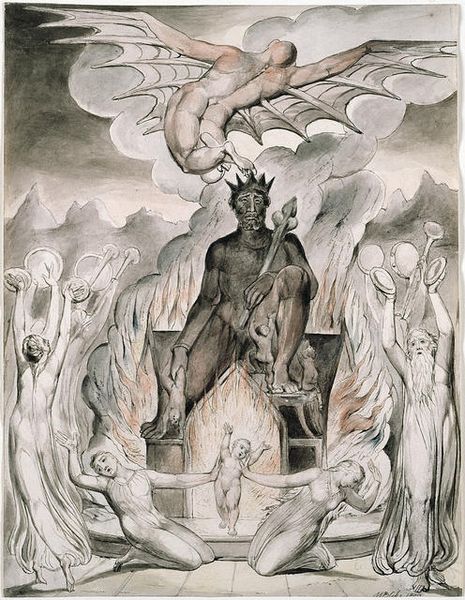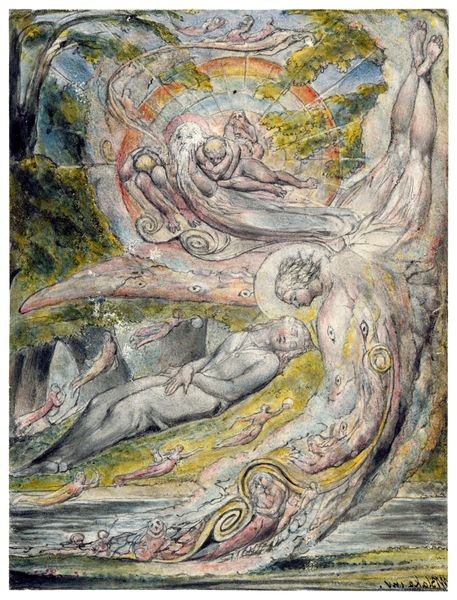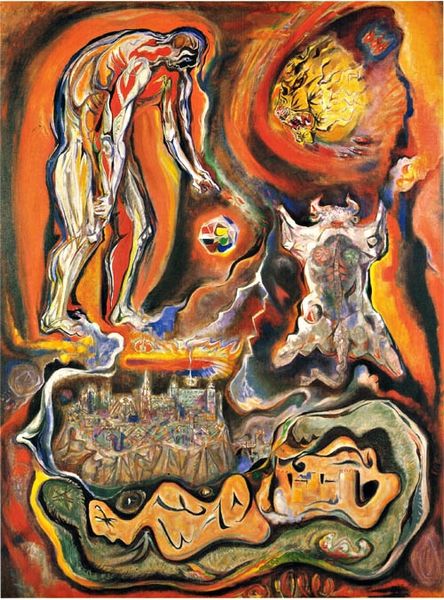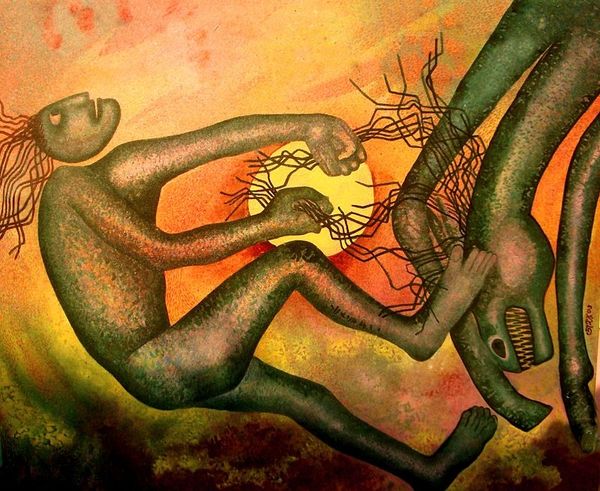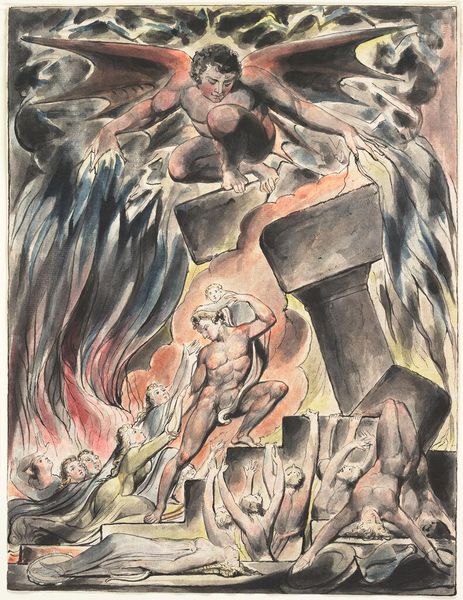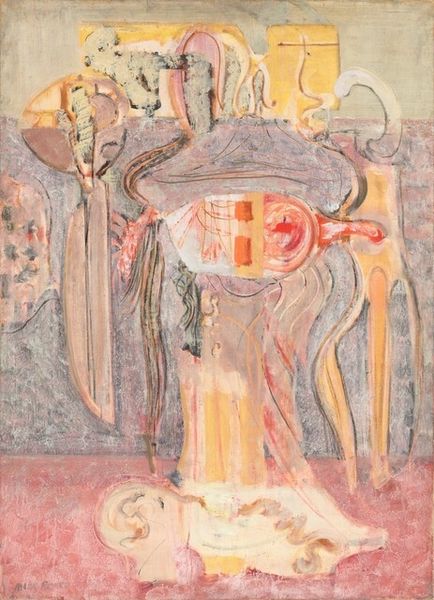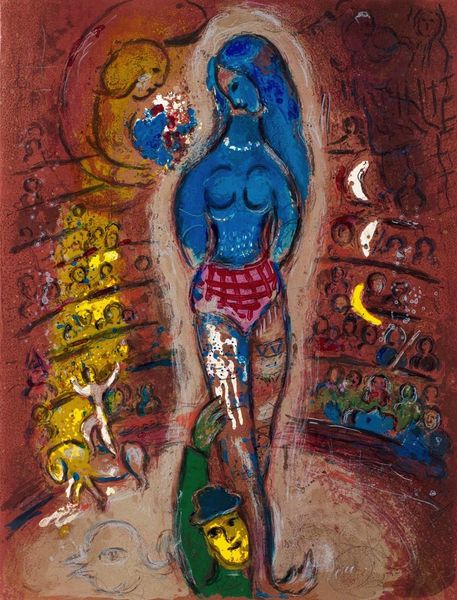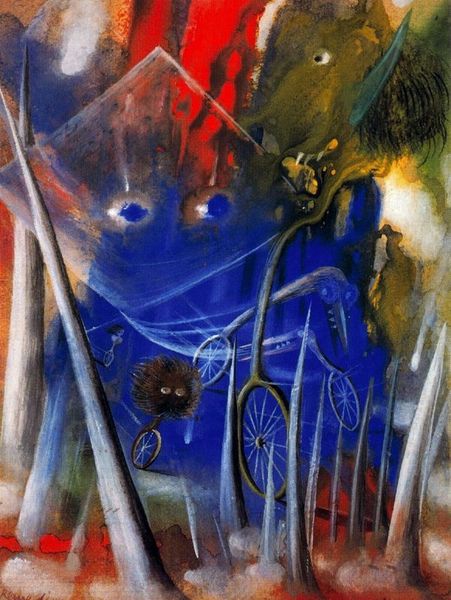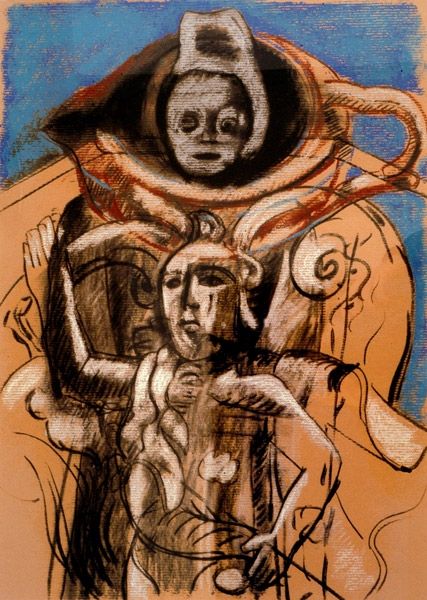
drawing, paper, watercolor, ink
#
drawing
#
allegory
#
narrative-art
#
figuration
#
paper
#
watercolor
#
ink
#
coloured pencil
#
underpainting
#
romanticism
#
mythology
#
human
#
line
#
symbolism
#
history-painting
#
watercolor
Copyright: Public domain
Curator: This is William Blake's "Illustration to Dante's Divine Comedy, Hell," a work rendered in ink and watercolor on paper. Its creation aligns with Blake's lifelong project of illustrating major literary works. Editor: My immediate impression is one of layered suffering. The watercolor is so translucent it gives an ethereal quality, yet the figures are caught in what looks like a visually oppressive, multi-tiered space. The symbolism is quite overwhelming. Curator: Absolutely. The socio-political contexts of Blake's era, including revolutions and stark class divisions, profoundly shaped his reading of Dante. He reimagines hell not just as a place of eternal damnation, but as reflective of earthly injustices and spiritual imprisonment. This drawing exemplifies his visual rebellion against Enlightenment rationalism. Editor: Looking closely at the composition, there is this tiered structure where one scene blends almost seamlessly into the next through skillful lines. Look how the figures, especially the suffering souls, are elongated, distorted, almost like their forms themselves reflect spiritual anguish. Curator: Exactly. Think of Blake as someone intensely engaged with challenging dominant theological perspectives of the time. His "Hell" becomes a commentary on abuses of power, religious hypocrisy, and the individual's struggle against oppressive systems. We might even see a radical empathy extended toward those society marginalizes and condemns. Editor: Yes, the flowing lines give a certain grace to even the tormented figures. I see echoes of Michelangelo in the muscularity but a wholly original expressionistic use of anatomy to show pain. Notice the contrast in the upper section – that radiant color, even within such a tragic scene, lends a strange beauty. Curator: Blake, like many Romantic artists, found ways to express humanity, rebellion, and hope, even amidst depictions of despair and spiritual darkness. It makes this "Hell" profoundly engaging beyond simple allegory. Editor: It’s a reminder that close attention to composition and color reveals powerful formal choices, adding so much emotional resonance to what might at first seem merely narrative. Curator: For me, this illustration embodies how art can be both a critique of its own time and a space for re-imagining possibilities for radical societal change. Editor: And a testimony to the timeless power of artistic technique to evoke emotion.
Comments
No comments
Be the first to comment and join the conversation on the ultimate creative platform.
